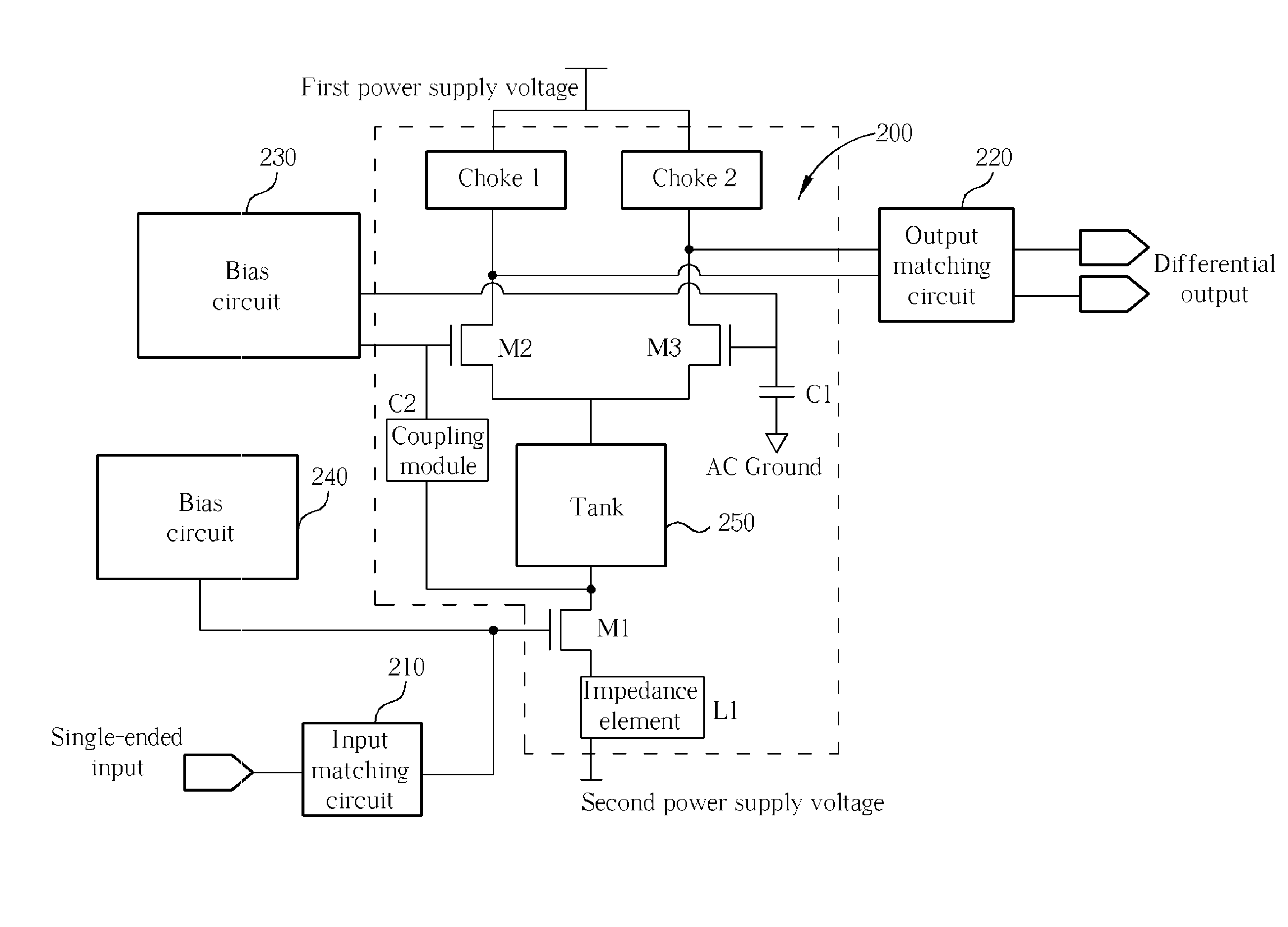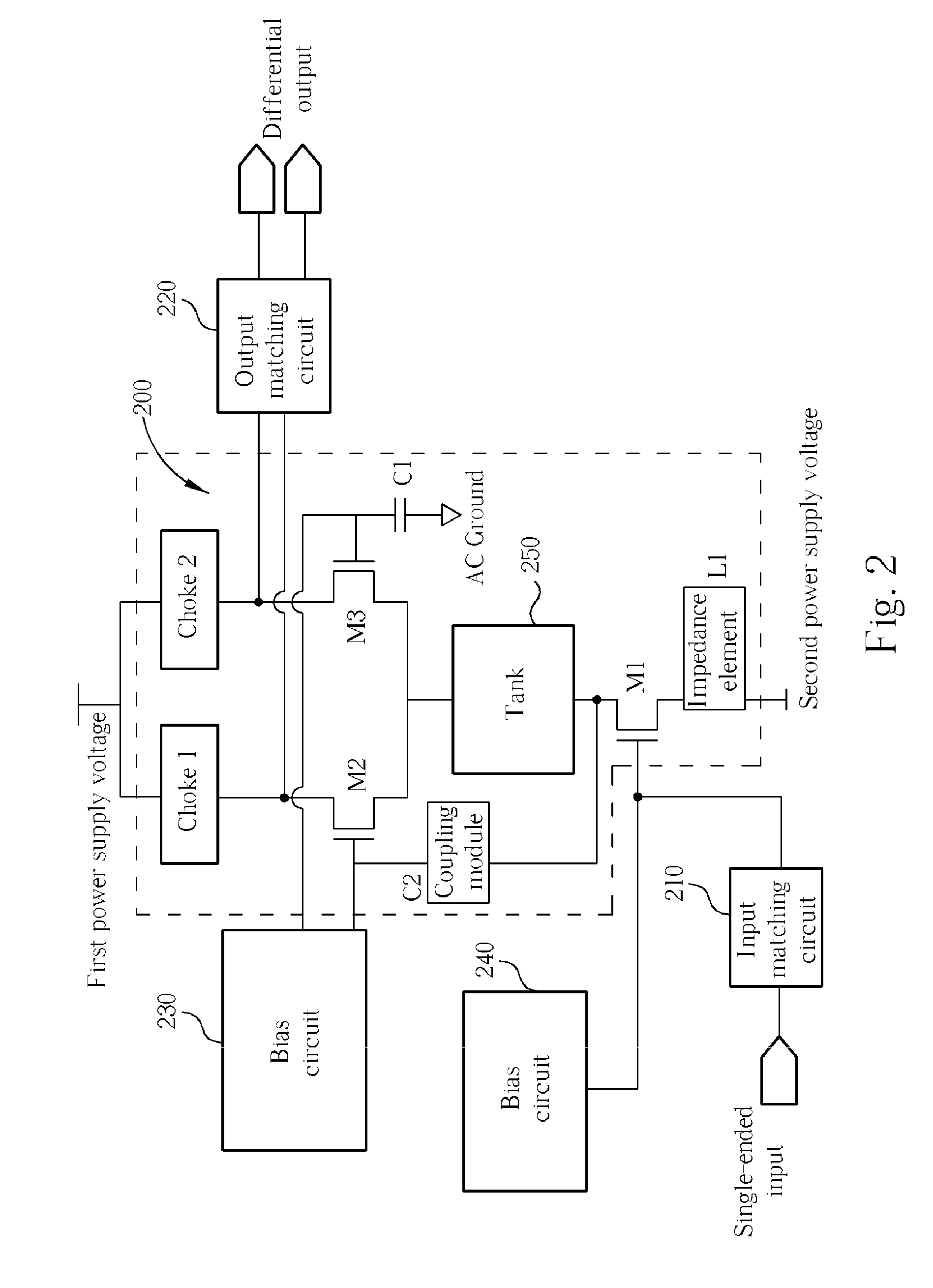High-efficiency single to differential amplifier
a technology of differential amplifier and amplifier, which is applied in the direction of amplifiers, amplifiers with semiconductor devices only, amplifiers with semiconductor devices, etc., can solve the problems of not being particularly efficient and none being able to provide high efficiency to meet today's technological demands
- Summary
- Abstract
- Description
- Claims
- Application Information
AI Technical Summary
Benefits of technology
Problems solved by technology
Method used
Image
Examples
Embodiment Construction
[0018]Please refer to FIG. 2, which is a diagram of a high-efficiency single-to-differential amplifier 200 according to one embodiment of the present invention. The amplifier 200 takes a single-ended input through an input matching circuit 210, and outputs a matched output signal through an output matching circuit 220. The amplifier 200 is biased by a first bias circuit 230 and a second bias circuit 240. The amplifier 200 comprises a first transistor M1, which has a source (third) terminal coupled to a second power supply through a first impedance element L1. The first transistor M1 also has a gate (first) terminal coupled to the input matching circuit 210 for receiving the single-ended input, and a drain (second) terminal for outputting a first output signal. The first transistor M1 is biased by the second bias circuit 240. The first impedance element L1 may comprise an inductor, a bonding wire, a down-bond, a microstrip line, a microstrip network, an interconnect line, or a via ho...
PUM
 Login to View More
Login to View More Abstract
Description
Claims
Application Information
 Login to View More
Login to View More - R&D
- Intellectual Property
- Life Sciences
- Materials
- Tech Scout
- Unparalleled Data Quality
- Higher Quality Content
- 60% Fewer Hallucinations
Browse by: Latest US Patents, China's latest patents, Technical Efficacy Thesaurus, Application Domain, Technology Topic, Popular Technical Reports.
© 2025 PatSnap. All rights reserved.Legal|Privacy policy|Modern Slavery Act Transparency Statement|Sitemap|About US| Contact US: help@patsnap.com



